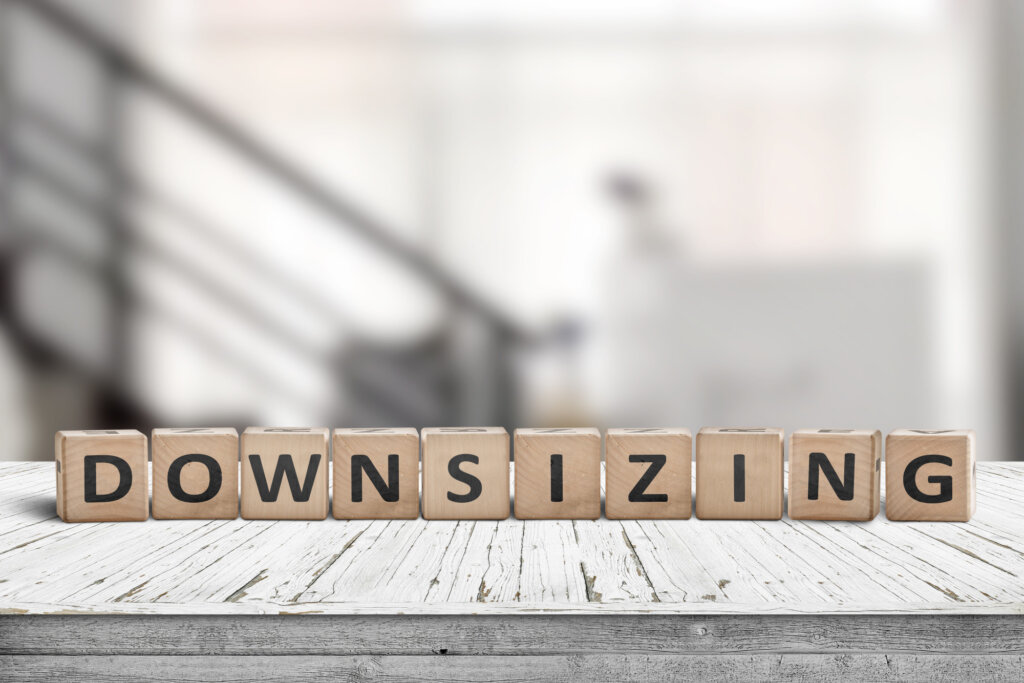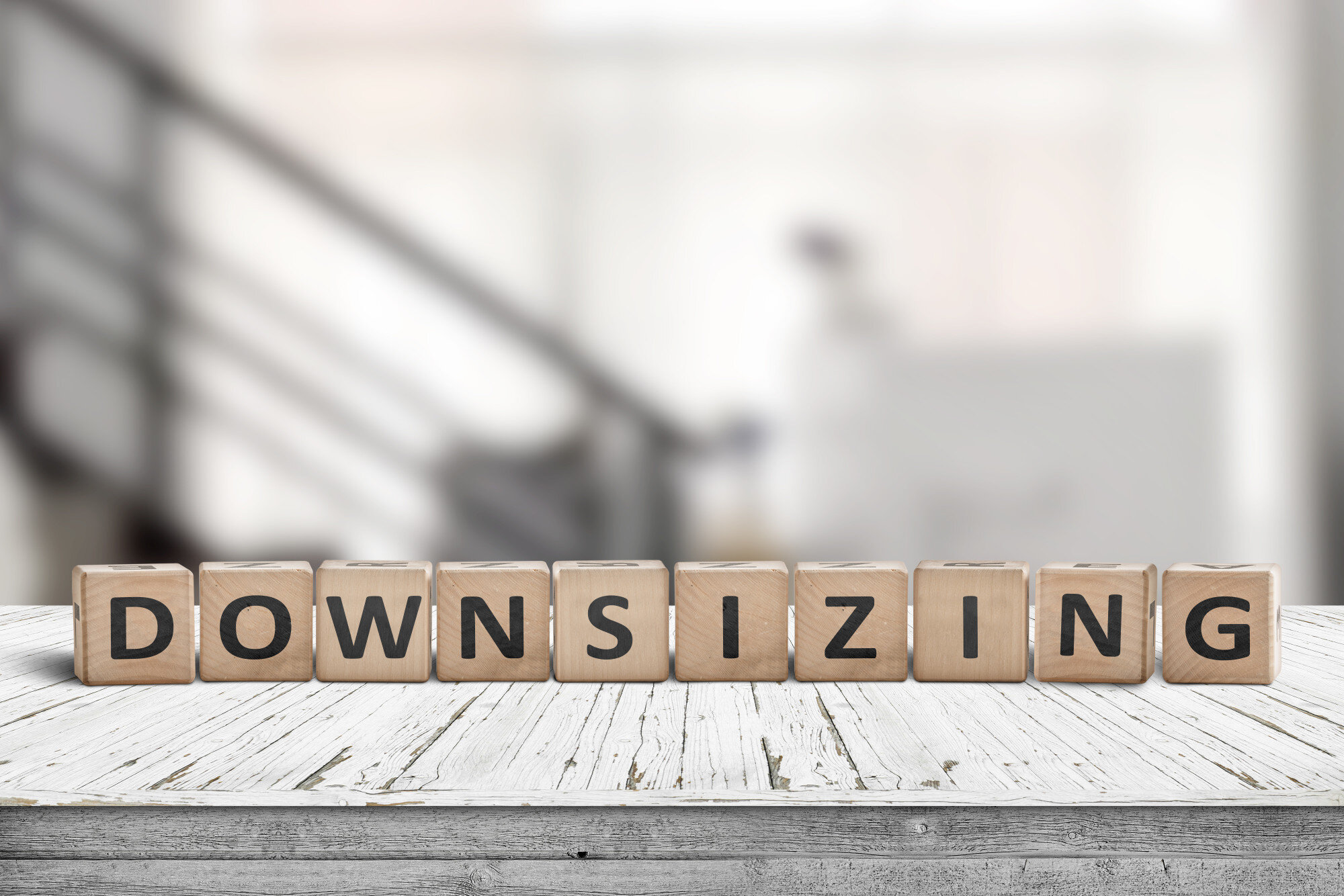
In 2017, 12% of home buyers that were between 45 and 64 were downsizing their homes.
If you’re also interested in downsizing your home, you’re definitely not alone. But it can be a challenging process that feels very overwhelming.
Thankfully, we’re here to help you. Keep reading for the perfect downsizing tips that will make the entire process stress-free.
Do You Need to Downsize?
Before you put all the work into selling your home, you should consider if downsizing is necessary in the first place. There are many reasons why a family might decide to get a smaller house.
For example, if you had a large family but all of your children moved away into their own places, you might have a lot of empty bedrooms. While having a spare bedroom or two can be useful, it can be annoying to have so much empty space that you have to keep cleaning.
You’ll also have to pay to heat and cool those rooms when no one even uses them. It makes sense to move to a house that is cheaper and smaller. If you’re looking for good ways to help your budget, investing in a smaller home is a great way to do it.
Big houses are expensive to pay for when it’s insurance, property taxes, or your mortgage. Big homes also have higher utility bills because there is more space to heat and cool.
If you’re close to retiring, you may want to consider downsizing to make your retirement funds go even further.
You might also want to consider downsizing now if the housing market is right for you to get the best deal.
Benefits of Downsizing
If you’re on the fence about downsizing, there are many benefits to downsizing your home before you actually move. This means decluttering a home and minimizing how many personal belongings you actually have to move.
This will help you prepare emotionally and separate yourself from this house and get ready to move into a new home. This can help you feel emotionally ready for the move and make the process much easier.
When you sort through your stuff, you’ll also be reminded that many of these belongings will be with you in the new home as well, which can be comforting.
You’ll also be more prepared if you start decluttering your home in advance. This means you can minimize the number of things you need to move to make it easier on yourself.
You’ll be in a good position when you get closer to the move date and need to pack and move all of your belongings.
If you’re selling your home, decluttering can also help you stage your home for a cash buyer or a real estate agent. When there is too much clutter, it can take away from the actual benefits that would come with buying that house.
It’ll be hard for people to imagine your house as theirs if all of your belongings are taking up every space. Buyers want space to imagine the home as theirs and filled with their belongings.
Start Organizing
If downsizing before you move sounds like a good idea, then you’ll need to start organizing. Being organized will make the downsizing process much easier.
You might even want to start doing it months in advance if you can. When you start early, you’ll be more prepared and less likely to be stressed as well. Downsizing can feel overwhelming when you don’t have an organized strategy.
Instead of being overwhelmed and trying to do it all at once, try downsizing one room at a time. Tackling one room at a time seems more manageable, and it’ll help you take the right steps to fully downsize your home.
You can also go through each room once you’re done and make a list of all the items that will move with you to the new home, and the ones that you’ll sell or donate.
Figure Out the Square Footage Difference
It can help you figure out what to keep and throw away when you know what the square footage difference is. This way, you’ll know what pieces of furniture to keep and how many belongings you can keep.
If you don’t have a set home that you’re going to downsize to, at least come up with an average of the square footage of a home that you’d like to move in. It can help if you calculate the square footage of each room as well.
Some of your furniture might not work in a smaller room, and it’ll be easier if you get rid of it now rather than having to move it, only to find out that it won’t work in the home anyway.
Decide on a Downsizing Process
Once you know the size of the place that you need to downsize to, there are many different strategies that can guide your decluttering. You should pick the one that works best for you and feels more natural.
For example, you can start by going through everything and then figuring out what you will just throw away. It’s advised to repurpose it or donate it if possible, but if you can’t, then you should make a pile of junk and hire a company to haul away your junk.
You can also make a pile of things that you want to give to your family or friends. If you want to try and make some money, you can try having an estate or a garage sale. Some people will also sell things on Facebook Marketplace, but this can be time-consuming as well.
You can also pick a charity and donate all of your unwanted items. Depending on the charity you pick, they might offer free pickups to make it as easy as possible for you.
Consider Sentimental Value
When you’re going through belongings, one way you can try downsizing is by figuring out what items have sentimental value or not. When you’re deciding whether you should keep it, try to remember if you’ve used it at all in the past year.
If you have, then think about if the item brings you joy or not. If it doesn’t, then you should get rid of it. Marie Kondo was the one who developed this method, but a lot of people have been successful with it.
If you do have attachments and hold sentimental value with some items, you might find that they’re challenging to let go of. However, they might be taking up really important space in your home.
You might want to consider taking a picture of the ones that aren’t as sentimental before getting rid of them.
Organize Belongings You’re Keeping
Once you’ve narrowed it down to what you’re going to get rid of, then you’ll want to organize whatever belongings you’re going to keep. If you have them spread out all over the floor, it’ll make it challenging to maneuver around, and it can make you feel stressed out during an already stressful time.
You should arrange them using tubs or bins. If you have any oversized items, you might want to pack some of them in moving boxes. However, if you’re going to seal the box, make sure you list what is in the box so that you don’t forget and know where everything is.
You’ll also want to put all of your important documents in an important place in case you need them. This will be things like your tax returns, birth certificates, passports, or social security cards.
Decide on How to Sell the Home
Once you’ve started downsizing, you also need to figure out how you’re going to sell your home. Many people will hire a real estate agent who will list their house on the market.
Once your home is on the market, you’ll have to stage your house and invite prospective buyers in to check it out. Dealing with these buyers and their mortgages can delay closing on your home, which can be challenging when you’re trying to downsize quickly.
Thankfully, there is also the option to sell your home to a company that will pay cash for your home. You can avoid having to pay a real estate agent and also get cash for your home in a quick and easy process.
Discover More Downsizing Tips to Sell Your Home
These are only a few downsizing tips to sell your home, but there are many more benefits to downsizing.
Once you’re done downsizing, you’ll need to figure out how to sell your home. If you’re looking for an easy way to sell your house, consider selling to us!
If you’re interested in learning more about how to get cash for your home, check out this page!

